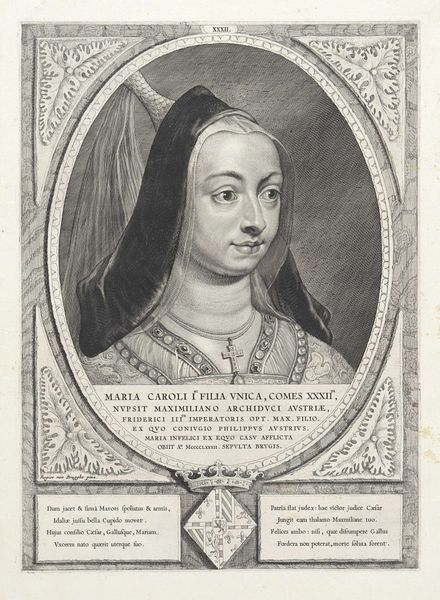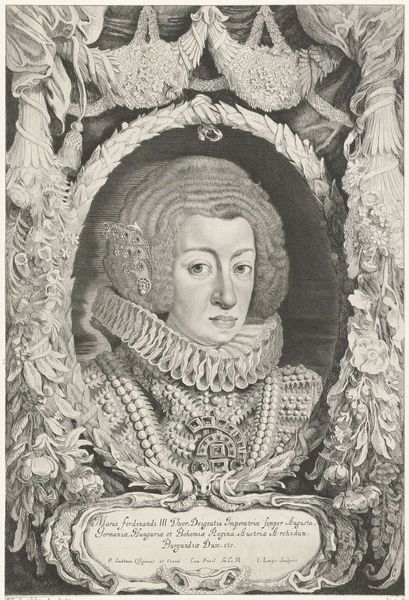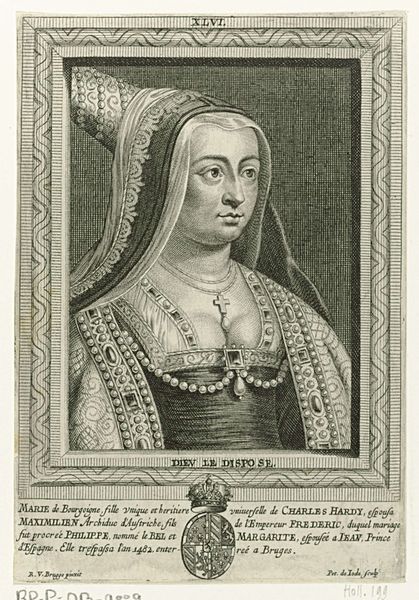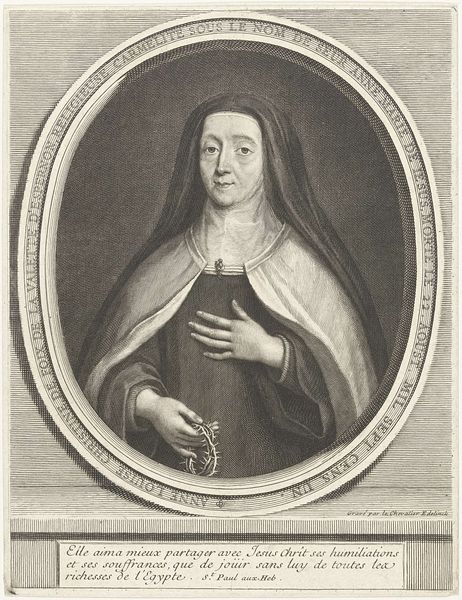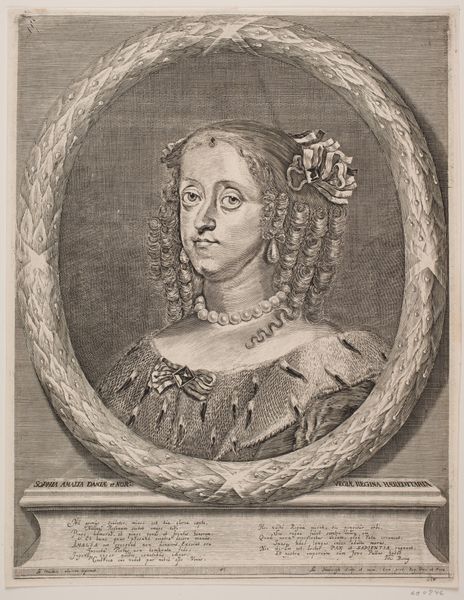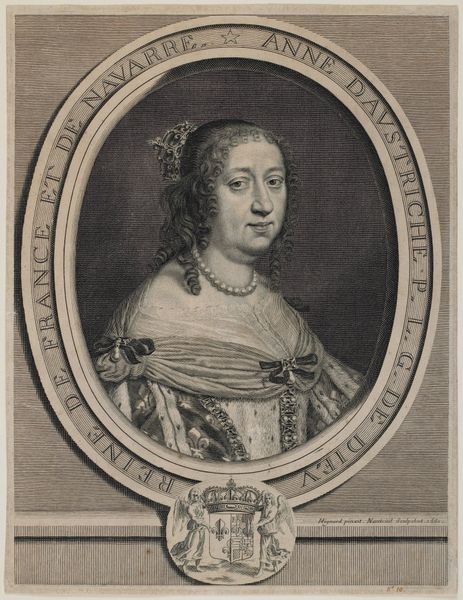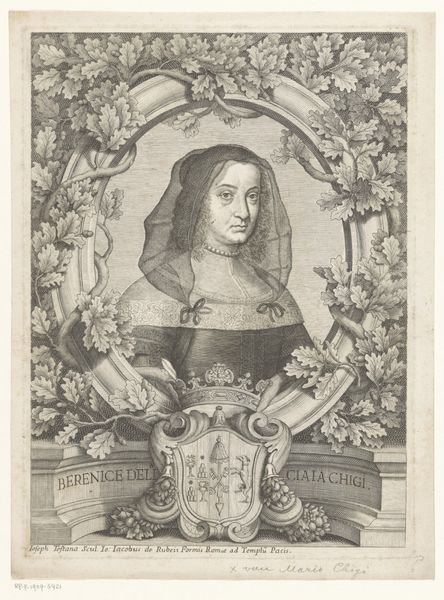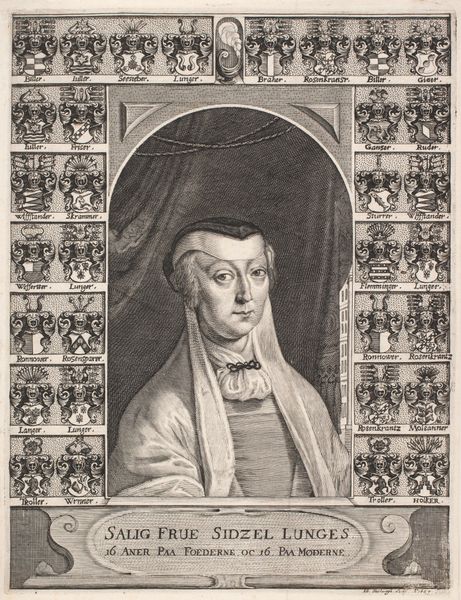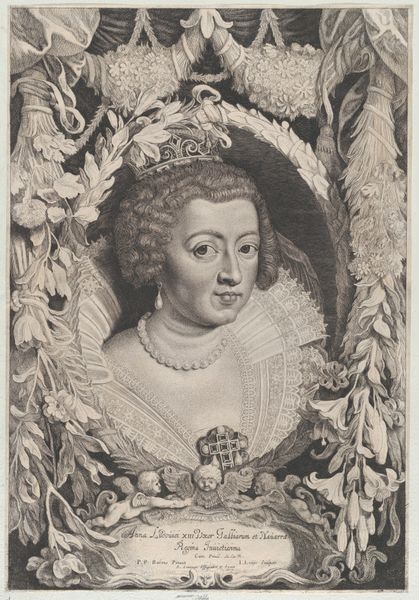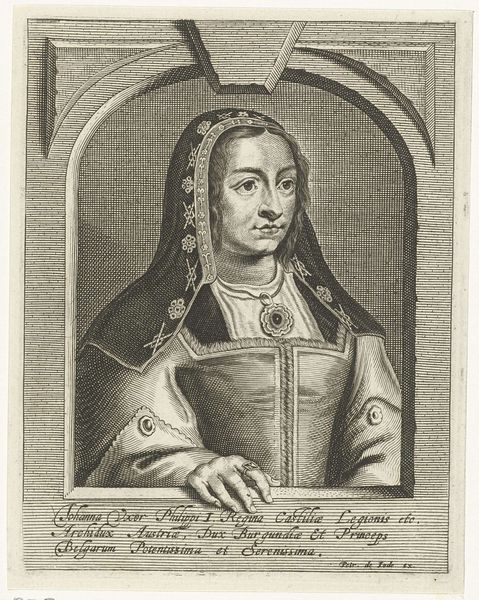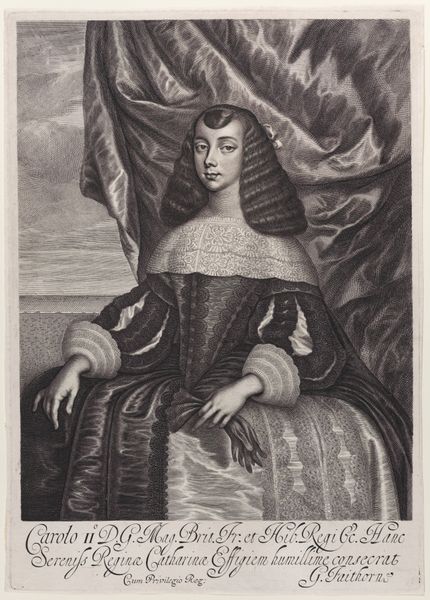
paper, engraving
#
portrait
#
baroque
#
paper
#
line
#
history-painting
#
engraving
Dimensions: height 407 mm, width 273 mm
Copyright: Rijks Museum: Open Domain
Editor: This engraving, "Portrait of Joanna the Mad, Queen of Castile," by Jonas Suyderhoef, was created between 1644 and 1650, using paper and a meticulous line technique. I’m immediately struck by the formal presentation, but there’s also an undeniable melancholic mood evoked by the sitter’s gaze. What do you see in this piece? Curator: Intriguing, yes. Ignoring the representational aspects for a moment, observe the elaborate frame and decorative elements surrounding Joanna. Notice how the artist employed compositional balance between organic motifs – foliage, flowers – with rigid heraldic emblems. The contrasting textures further animate the surface. What function does this dichotomy play? Editor: Perhaps it symbolizes the tension between her royal status and inner turmoil, reflected through decorative, structured versus free flowing elements? Curator: Precisely. It is key to consider how these formal choices construct meaning. Focus on Suyderhoef's precise execution and strategic distribution of light and shadow which gives depth to an otherwise flat medium, underscoring psychological intensity in a structured setting. It creates an undeniably powerful viewing experience. Do you think removing this frame would alter our engagement with the portrait itself? Editor: Absolutely! Without the framework, the portrait would lose a dimension. The stark contrast emphasizes Joanna’s figure while also highlighting the details in the setting and accessories of that period. Thanks! That has made me think about how much visual grammar affects how we feel and what conclusions we might draw. Curator: Exactly. And analyzing formal strategies provides tools for navigating these intricate systems of visual communication. It changes how you read a picture.
Comments
No comments
Be the first to comment and join the conversation on the ultimate creative platform.
